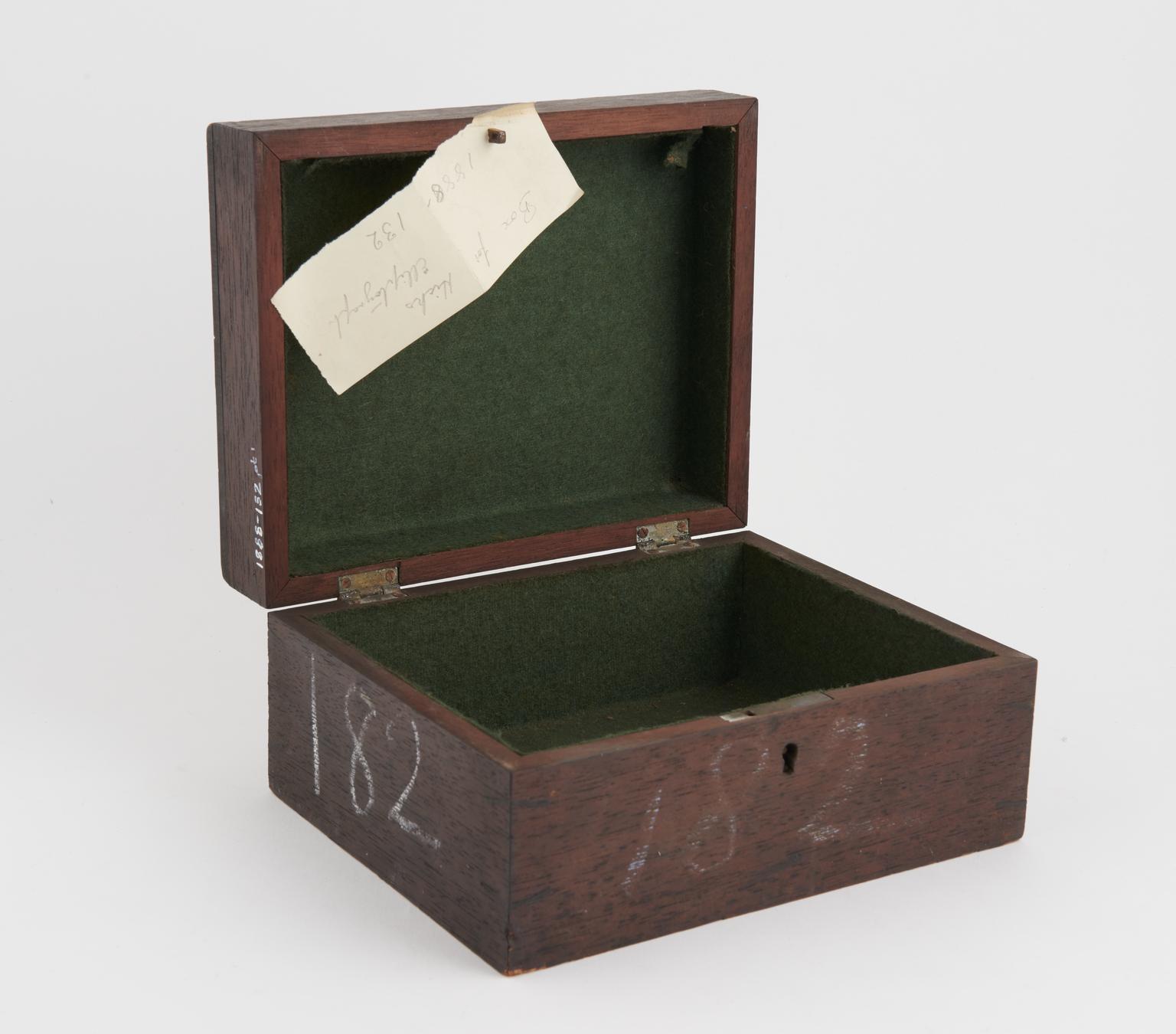
Case for ellipsograph devised in 1840 by John Hick of Bolton
Case for ellipsograph devised in 1840 by John Hick of Bolton
- Materials:
- wood
- Object Number:
- 1888-132 Pt1
- type:
- instrument case
- Image ©
- The Board of Trustees of the Science Museum
Ellipsograph devised in 1840 by John Hick of Bolton, in box
Simple vertical ellipsographs were introduced by engineers John Hick and James Nasmyth, the latter responsible for inventing the steam hammer. Hick was the eldest son of industrialist Benjamin Hick and one of the founders of British engineering company B. Hick and Sons based at the Soho Ironworks in Bolton, England. In 1842, he got the Royal Society of Arts’ silver medal for his ‘elliptograph’ as it was called in the 1840s. He designed and constructed it in his Bolton foundry and he sent the designs for its construction to London too.
To draw an ellipse with this instrument, the drawing point is guided around the inside of the ellipse gauge. Various sized ellipses can be produced by adjusting the height of the lower arm. The use of other gauges is required if one is to alter the ellipse’s proportions.

Case for ellipsograph devised in 1840 by John Hick of Bolton
Ellipsograph devised in 1840 by John Hick of Bolton.
Simple vertical ellipsographs were introduced by civil engineering and politician John Hick and James Nasmyth, the engineer responsible for inventing the steam hammer, both using trammels stack one above the other. Hick was the eldest son of industrialist Benjamin Hick and one of the founders of British engineering company B. Hick and Sons based at the Soho Ironworks in Bolton, England.
In 1842, he got the Royal Society of Arts’ silver medal for his ‘elliptograph’ as it was called in the 1840s. He designed and constructed it in his Bolton foundry and he sent the designs for his construction to London too.
To draw an ellipse with this instrument, the drawing point is guided around the inside of the ellipse gauge. Various sized ellipses can be produced by adjusting the height of the lower arm. The use of other gauges is required if one is to alter the ellipse’s proportions.